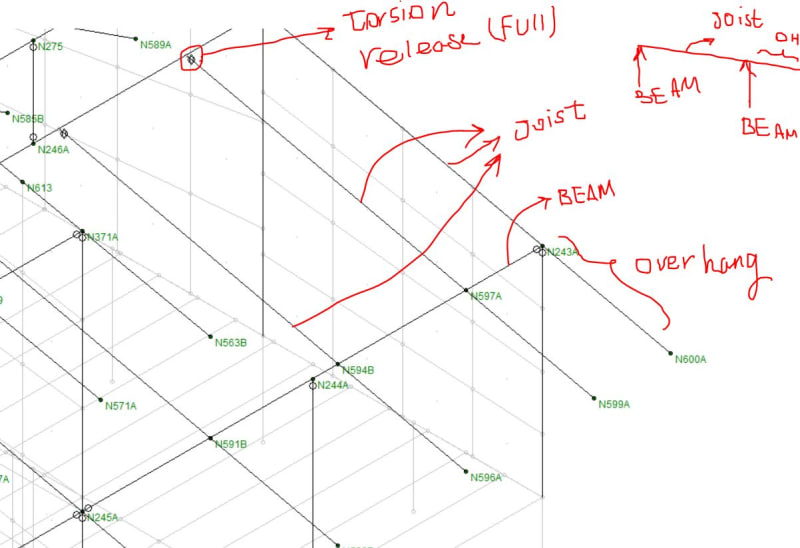bonbon83
Structural
- Aug 3, 2021
- 17
Hi guys,
I would like to know how to model two types of connection first one is the joist hanger and the second one is joist over the beam connection I am worried about the torsion that happens on the joists and the beam torsion causes shear stress and Risa will fail the member because of that I’m wondering what would be the best practice to consider that torsion ? is it good to use torsion release at the end of the beams?
Thx
I would like to know how to model two types of connection first one is the joist hanger and the second one is joist over the beam connection I am worried about the torsion that happens on the joists and the beam torsion causes shear stress and Risa will fail the member because of that I’m wondering what would be the best practice to consider that torsion ? is it good to use torsion release at the end of the beams?
Thx

